Q
What Are the Dimensions of Honda City Hatchback?
The Honda City Hatchback is a Class B vehicle. Its dimensions are as follows: the length varies depending on the specific model, being either 4,345 mm or 4,369 mm. All models have a width of 1,748 mm and a height of 1,488 mm. The wheelbase is 2,600 mm, which is crucial for the interior space and driving comfort. These dimensions contribute to a relatively compact yet practical vehicle that is suitable for city driving and can provide sufficient space for five passengers. The 40-liter fuel tank allows it to travel a considerable distance between refills. The 289-liter trunk space can accommodate a fair amount of luggage or daily essentials, and the 60:40 split-folding rear seats offer flexibility for carrying larger items when needed.
Special Disclaimer: This content is published by users and does not represent the views or position of PCauto.
Related Q&A
Q
What's the Reslae Value of Honda City Hatchback?
The resale value of the Honda City Hatchback is influenced by multiple factors, including the vehicle's age, condition, mileage, market demand, and configuration version. Generally speaking, Honda models have an above - average resale rate in the local market.
Take the City Hatchback launched in 2021 as an example. The new car price of the entry - level 1.5 S is about RM75,000. After three years of use, the second - hand price is approximately between RM55,000 and RM60,000 (depending on the vehicle's condition), which means it retains about 70% - 75% of its original value. If you choose the higher - spec V or RS versions, the residual value may be slightly higher, but it is also affected by mileage and maintenance records.
The Honda brand is quite popular in the Malaysian second - hand car market, especially the City series with a vehicle age of less than five years. Due to its fuel economy and reliability, there is a consistent demand for them. It is recommended that before selling your car, you ensure regular maintenance, keep a complete maintenance record, and refer to the recent transaction prices of the same model to get a more reasonable second - hand valuation. However, the actual price still depends on market fluctuations and the buyer's bargaining situation.
Q
What's the Engine Displacement of Honda City Hatchback?
The Honda City is available in both gasoline and gasoline hybrid (HEV, MHEV) versions. All models are equipped with an engine with a displacement of 1498cc, which is equivalent to 1.5 liters. This engine size strikes a balance between power and fuel efficiency, making it suitable for daily commuting and various driving needs.
The 1498cc gasoline engine can deliver a maximum power of 121 horsepower and a peak torque of 145 Nm. It is paired with a Continuously Variable Transmission (CVT) that enables smooth gear shifts.
In the gasoline hybrid RS e:HEV model, the 1498cc engine works together with an electric motor. The engine has a maximum power of 98 horsepower and a torque of 127 Nm, while the electric motor provides an additional 109 horsepower and 253 Nm of torque. The combined power output offers better acceleration performance.
Q
What Engine Is Equipped by Honda City Hatchback?
The two - door version of the Honda Fit offers different engine options. Some models are equipped with a 1.5 - liter naturally aspirated gasoline engine, with a naturally aspirated (NA) intake system. The engine has a displacement of 1,498 cc, generating a maximum power of 89 kW at 6,600 rpm and a peak torque of 145 Nm at 4,300 rpm, with a maximum horsepower of 121 hp. The vehicle is also equipped with a continuously variable transmission (CVT).
There is also the RS e:HEV model. It is equipped with a 1.5 - liter gasoline engine and a hybrid system. The engine itself can produce a maximum power of 72 kW at 5,600 - 6,400 rpm and a torque of 127 Nm at 4,500 - 5,000 rpm, with a maximum horsepower of 98 hp. The electric motor can provide a total power of 80 kW, a torque of 253 Nm, and a maximum horsepower of 109 hp. The battery type is a lithium - iron phosphate battery with a capacity of 1.3 kWh, and it uses an electronic continuously variable transmission (E - CVT). These engines strike a balance between performance and fuel economy to meet various driving needs.
Q
What's the Type of Honda City Hatchback's Gearbox?
The type of the Honda City's gearbox varies depending on the model and its powertrain. For gasoline-powered models, the transmission type is CVT (Continuously Variable Transmission), providing a smooth driving experience by continuously adjusting the gear ratio, which helps optimize fuel efficiency and power output according to different driving conditions.
For hybrid models like the Honda City RS e:HEV, it is equipped with an E-CVT (Electronically Controlled Continuously Variable Transmission). The E-CVT is specifically designed for hybrid vehicles. It coordinates the power output between the engine and the electric motor, allowing smooth switching between different driving modes such as pure electric drive, engine drive, and hybrid drive, thereby enhancing the overall efficiency and performance of the hybrid system.
Q
What's the PCD Size of Honda City Hatchback?
The PCD (Pitch Circle Diameter) of the Honda City Hatchback is 5x114.3, which means the wheel's bolt holes are arranged in a circle with a diameter of 114.3 mm and consist of 5 bolt holes. This specification is the same as that of the Honda Jazz, certain City Sedan variants, and some mainstream Japanese models in the Malaysian market (such as the Toyota Vios and Nissan Almera), providing ample options for wheel upgrades or replacements.
When changing wheels or tires, owners should not only consider the PCD but also ensure compatibility with the center bore (CB) size, offset, and tire specifications to maintain safety and handling stability. If upgrading to larger or more customized wheels, it is advisable to consult a professional tire shop or an authorized Honda service center to avoid purchasing unsuitable rims that could compromise driving safety.
Q
Does Honda City Hatchback Support Apple Carplay?
The Honda City is equipped with Apple CarPlay. The all-new 2024 Honda Fit hatchback has been launched in Malaysia. The vehicle features an 8-inch multimedia touchscreen on the center console, which supports wireless connection with Apple CarPlay and Android Auto, allowing users to connect their iPhones to the car's infotainment system. Once connected, drivers can directly access various functions of their iPhones, such as navigation, music playback, making calls, and sending text messages, through the car's touchscreen or voice control. By integrating the familiar iPhone interface with the vehicle system, it enhances the in-car experience. This is a very convenient feature for those who rely on their iPhones for various daily tasks and want to achieve seamless connectivity while driving.
Q
What's the Brand of Honda City Hatchback's Tire?
The factory-fitted Honda City Hatchback in the Malaysian market is primarily equipped with Yokohama's BluEarth-GT series tires (specifically 185/55 R16 or 185/60 R15, depending on the variant). These tires emphasize fuel efficiency, durability, and wet-road safety, aligning with the City Hatchback's positioning as an economical family car. However, depending on the production year or promotional packages, some vehicles may be equipped with tires of other brands such as Dunlop or Bridgestone. The exact tire model should be verified based on the factory configuration at the time of purchase.
For owners looking to replace their tires, other brands in the same specification—such as Michelin Energy XM2+ or Continental CC6—can be considered. These are popular energy-saving and comfort-oriented tire options in the Malaysian market, offering a balance between fuel efficiency and quiet performance. Regular checks on tire wear and pressure are recommended, along with adhering to the manufacturer's suggested replacement intervals to ensure driving safety.
Q
Is Honda City Hatchback a Good Car? Learn the Pros and Cons Here
The Honda City Hatchback has many advantages and is a great car. In terms of appearance, it features a delicate, stylish, and sporty design. For instance, some models are equipped with a honeycomb radiator grille and an added rear spoiler. The RS version also has unique trim panels and side skirts, making it highly recognizable. The interior details have been optimized. The RS version has an all - black interior. In some models, the instrument panel has been upgraded to a 4.2 - inch TFT color screen. The central control touch - screen host is 8 inches, and the pixels of the rear - view camera have been improved.
In terms of safety and intelligent assistance, the entire vehicle lineup comes standard with multiple safety systems, such as ABS anti - lock braking, vehicle stability control, lane departure warning, and autonomous emergency braking. There's also an ISO FIX child seat interface. Some models are equipped with the Honda Sensing function, providing comprehensive protection for the driver. Additionally, some models have added practical features like wireless CarPlay and a wireless charging panel.
In terms of power, there are multiple options. The 1.5L naturally aspirated engine paired with a CVT transmission offers a smooth power output, which is sufficient for daily driving. The hybrid system in the e:HEV RS model delivers excellent power and has relatively low fuel consumption. However, it also has some drawbacks. For example, the rear brakes of some models are drum brakes, which are slightly inferior to disc brakes in terms of braking performance. The rear - seat space may feel a bit cramped for taller passengers. Overall, the Honda City Hatchback performs well in terms of appearance, safety, and power, and can meet the daily needs of most users.
Q
What's the Width of Honda City Hatchback?
The Honda City has a width of 1,748 millimeters. This B-segment hatchback offers a comfortable interior space for passengers, and its width helps create a spacious cockpit, providing sufficient shoulder room for both front and rear passengers and enhancing the overall comfort during the drive. Whether it's a short trip around the city or a long-distance journey, this width ensures a more enjoyable driving and riding experience. Moreover, the vehicle's width also plays a certain role in its overall stability and handling on the road.
Q
What's the Road Tax of Honda City Hatchback? How to Calculate It?
The Honda City Hatchback provides petrol and hybrid versions, and the road tax calculation methods vary for different versions. For the petrol version, since its displacement is 1498cc, which is less than 1800cc, according to regulations, it is required to pay 75% excise duty. The specific amount of road tax needs to be comprehensively calculated in combination with the actual value of the vehicle and other factors. Generally speaking, the road tax price to be paid is calculated by multiplying the vehicle value by the 75% excise duty rate and then adding other possible tax items (such as the normal 10% sales tax, which has been waived during the current pandemic).
As for the hybrid version, currently all electric vehicles (including hybrids) registered in Malaysia are exempt from road tax. The tax - exemption period will expire at the end of 2025. Starting from January 1st, 2026, a new policy will be implemented. The road - use tax rate for electric vehicles will be divided into different levels according to engine power: for vehicles with an engine power below 100kW, for every additional 10kW of power, the tax increases by 10 ringgit; for vehicles with an engine power between 100kW and 210kW, for every additional 10kW of power, the tax increases by 20 ringgit; for electric vehicles with an engine power between 210kW (excluding 210kW) and 310kW, for every additional 10kW of power, the tax increases by 30 ringgit. Therefore, the road tax for the Honda City Hatchback hybrid version after 2026 needs to be calculated based on its specific engine power.
Latest Q&A
Q
how to reduce fuel consumption
If you want to cut down on fuel use, start with your driving habits. Avoid jackrabbit starts and sudden stops—stick to a steady speed instead. All that constant accelerating and braking guzzles gas, so when you're on the highway, cruise control is your best friend for maintaining a consistent pace.
Next, regular vehicle maintenance is a must. Swap out your air filter, spark plugs, and engine oil as scheduled to keep the engine running in top shape. Don't forget to check your tire pressure too—keep it at the manufacturer's recommended level. Underinflated tires create more rolling resistance, which means more fuel burned.
Also, lighten the load. Clean out that trunk—all the stuff you never use just adds weight. If you're not using roof racks, take them off. They create extra wind drag and add unnecessary heft, both of which hurt fuel economy.
In Malaysia's hot weather, AC is non-negotiable, but you can use it smarter. Don't crank the temperature way down; set it to a comfortable level. When parking, try to find a shaded spot or use a sunshade to keep the interior from turning into an oven. That way, the AC won't have to work as hard to cool things down.
Another fuel-saver: plan your routes to avoid peak traffic jams. Sitting idle or crawling along in stop-and-go traffic kills fuel efficiency.
If you're thinking about a new car, hybrid or fuel-efficient models are worth a look. The tech is pretty mature in Malaysia now, and they can save you big on fuel costs over time.
Lastly, use good-quality fuel and stick to the octane rating recommended by the manufacturer. It helps the engine run more efficiently.
Put all these tips together, and you'll not only slash your fuel bills but also help your car last longer.
Q
how to calculate fuel consumption per km malaysia
Figuring out your car's fuel consumption per kilometer in Malaysia is pretty straightforward. Here's how you do it: First, fill your tank right up until the pump auto - clicks off, and jot down your odometer reading. Then, drive around as you normally would for a bit. Once you're ready, fill it up again to the same auto - shutoff point. Note: how many liters you put in the second time and how many kilometers you've covered since the first fill. To get your fuel consumption in liters per 100 kilometers, just take the number of liters you added the second time, divide it by the kilometers driven, and then multiply that result by 100. If you want to know the cost per kilometer, take that liters/100km figure, multiply it by the current fuel price (like RM2.05 per liter for RON95), and then divide by 100.
Now, it's important to remember that fuel economy can take a big hit from a few key things. Your driving style is a big one – sudden acceleration and abrupt braking can guzzle up to 20% more fuel. Then there's the road conditions – traffic - jammed city streets will burn about 30% more gas than cruising down the highway. Running the air - conditioner at its maximum setting continuously can increase the engine load by approximately 10%. And don't forget about weight – every extra 100kg in the car can bump up fuel use by around 5%.
To keep things running as efficiently as possible, it's a good idea to check your tire pressure regularly – being 20% below the recommended pounds per square inch can increase fuel consumption by 3%. Also, make sure your air filter isn't clogged; a dirty one messes with combustion efficiency. On the tech side, some newer cars come with active grille shutters and auto start - stop systems, which can actually help cut fuel use by 5 - 8%. For the data geeks out there, you can hook up a fuel monitoring app to your car's OBD port to keep an eye on real - time consumption.
Q
how to calculate co2 emissions from fuel consumption
Figuring out how much CO₂ your fuel use pumps out is actually pretty straightforward with this simple formula: CO₂ emissions (in kilograms) = fuel consumption (in liters) × the fuel's CO₂ emission factor. Here in Malaysia, common gasoline like RON95 has an emission factor of roughly 2.3kg per liter, while diesel comes in a bit higher at around 2.7kg per liter. Let's put that into perspective – say your car burns 8 liters of RON95 to cover 100km; that means your CO₂ output is 8 × 2.3 = 18.4kg for that trip.
But fuel type isn't the only player here. Your driving habits and how well you maintain your car make a big difference too. Jackrabbit starts and slamming on the brakes? That's just wasting fuel and cranking up emissions. On the flip side, keeping your engine tuned up regularly and making sure your tires are properly inflated can boost fuel efficiency, which in turn cuts down on emissions.
The Malaysian government is also doing its part by promoting EEV (Energy Efficient Vehicle) policies and encouraging the adoption of hybrid or electric vehicles to reduce overall carbon emissions. Understanding all this not only helps you calculate your own emissions but also empowers you to drive more eco-consciously.
Q
how to improve fuel consumption
Malaysian car owners looking to boost fuel efficiency can start with their driving habits, vehicle maintenance, and daily usage details. First off, adopt a smooth driving style – skip the sudden acceleration and harsh braking. All that constant mashing of the gas and slamming on the brakes guzzles more fuel. On the highway, cruise control is your friend to keep a steady speed.
Next, regular vehicle maintenance is non-negotiable. Swap out the air filter, spark plugs, and engine oil as scheduled to keep the engine running at its peak. And don’t forget to check tire pressure – underinflated tires create more rolling resistance, which means higher fuel consumption.
Also, lighten the load. Clear out that trunk clutter you never use – the heavier the car, the more fuel it burns. With Malaysia’s scorching weather, use the AC wisely: roll down the windows at low speeds, but switch to AC on the highway to cut wind resistance.
Oh, and go for quality fuel – and avoid idling for ages. For those really serious about long-term fuel savings? Consider a hybrid or an eco-friendly model. They’re built with fuel efficiency tech that’s perfect for city driving.
Bottom line: tweak your driving habits and stay on top of maintenance, and you’ll see a real difference in fuel economy – plus, you’ll be doing your bit for the environment too.
Q
how to save fuel consumption
In Malaysia, saving fuel starts with three key areas: your driving habits, how you maintain your car, and smart use of technology. First off, drive smoothly—avoid jackrabbit starts and sudden braking. Make good use of cruise control on the highway, and try to keep your speed between 90-110 km/h. Going too fast or too slow both guzzle more fuel.
Next, regular car maintenance is a must. Keep your tires properly inflated, use low-viscosity engine oil, and clean or replace your air filter regularly. All these little things help your engine run more efficiently. Also, lighten the load—ditch the roof rack if you’re not using it (it adds wind resistance!), and for short trips, maybe carpool or take public transport instead.
If you’re really serious about cutting fuel costs, consider a hybrid or eco-friendly model. Their energy recovery systems can seriously slash fuel use. And let’s not forget Malaysia’s heat—AC is a must, but set it around 24°C and use sunshades to reduce the load. Oh, and fuel quality matters too—stick to reputable stations with the right octane rating for your car.
Looking ahead, electric vehicles might have a higher upfront cost, but charging is way cheaper than petrol. They’re definitely worth considering as a long-term fuel-saving option.
View MoreRelated News
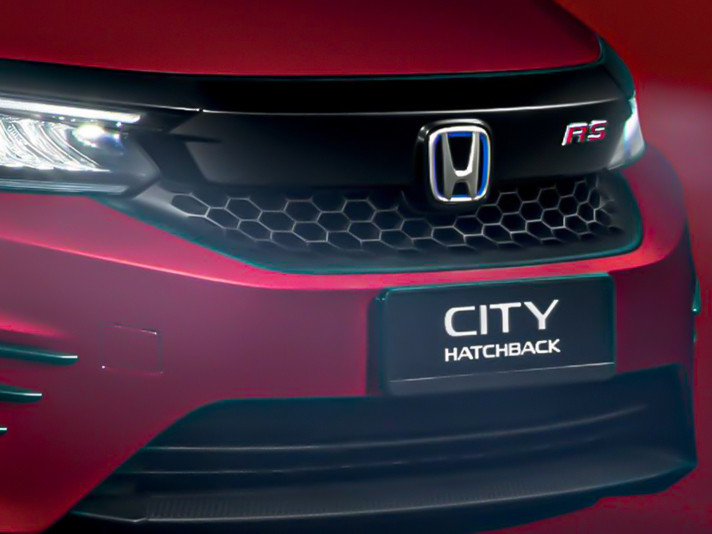
Is Honda City Hatchback Still Worth Buying in 2025?
JohnJun 26, 2025
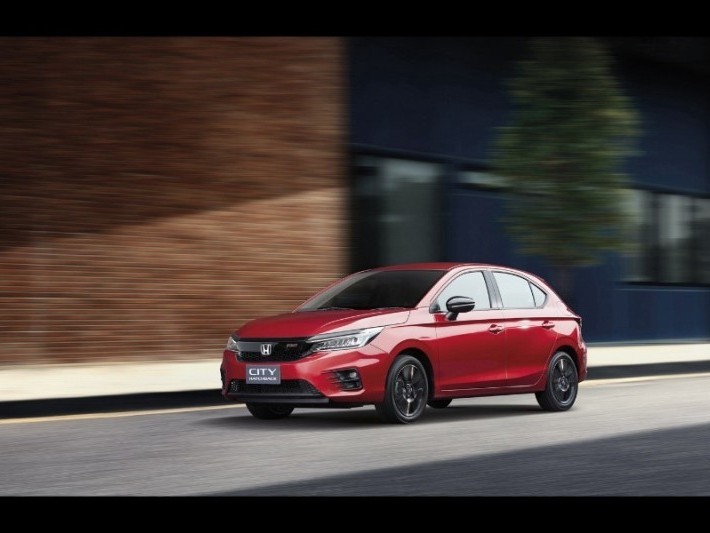
High Cost-Performance: Is the Honda City Hatchback Worth Buying? Dynamic Experience Revealed!
AshleySep 23, 2024
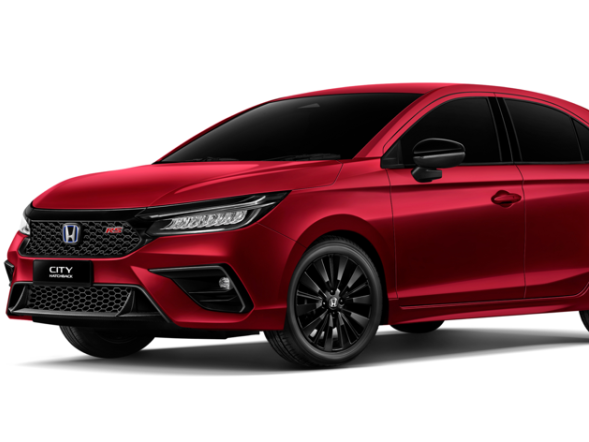
From Jazz to City Hatchback: The Perfect Transformation of Honda Hatchback
LienJun 4, 2024
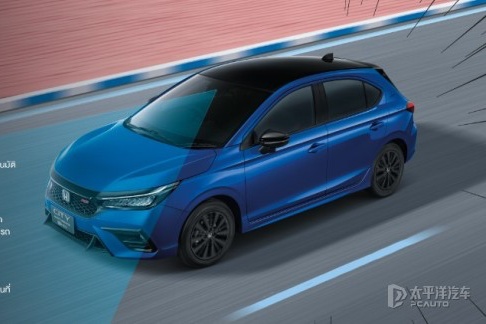
Honda City e HEV Hatchback RS: Fuel Efficiency
AshleyMay 4, 2024

Honda N-ONE e: Officially launched in the Japanese market, with a range of 295 kilometers
AshleySep 12, 2025
View More













 Cars
Cars


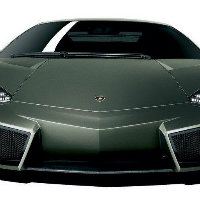
Pros
Cons